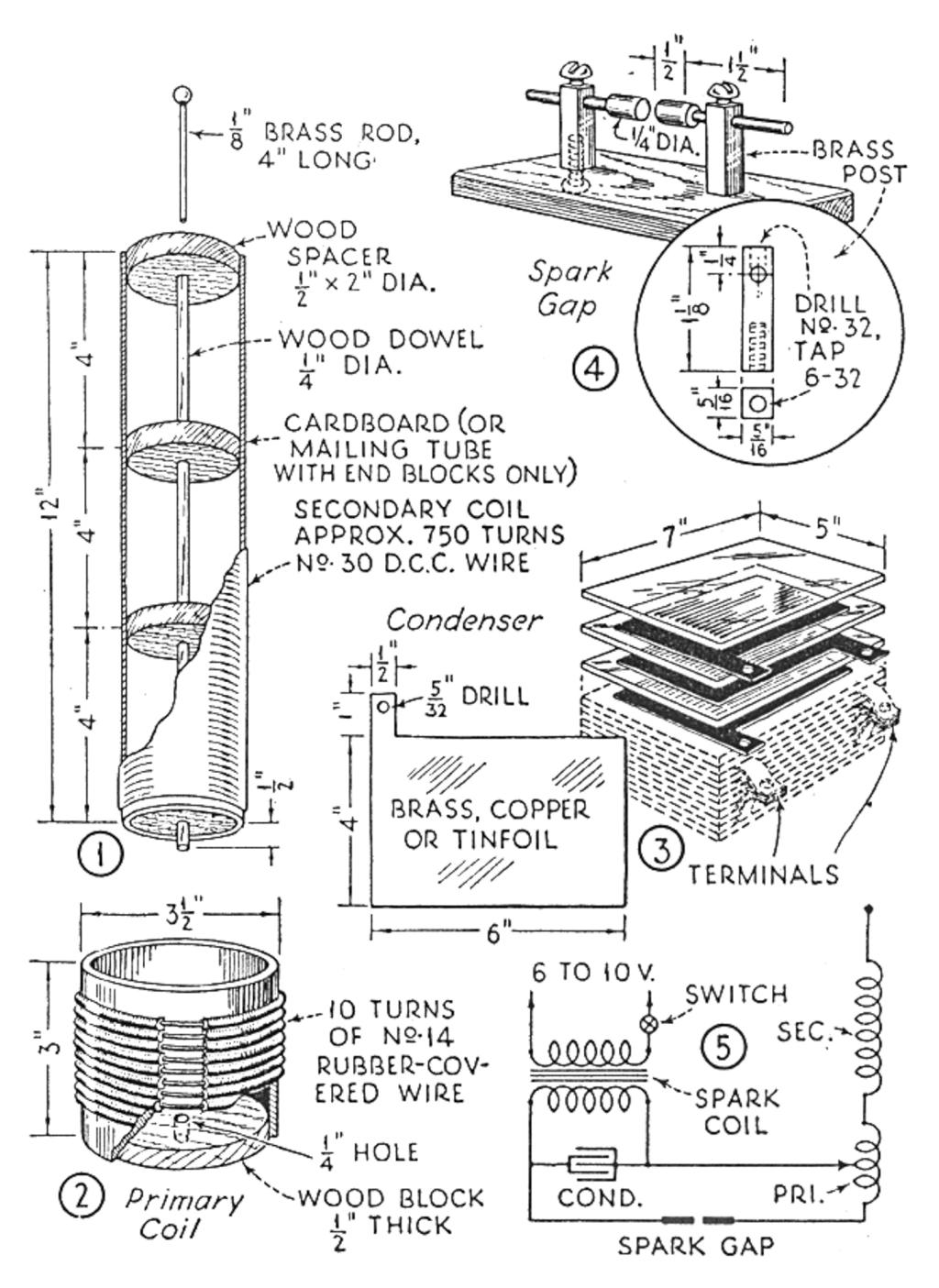TCBA Volume 8 - Issue 1
Page 11 of 18
Tesla Coils Resurrected
(continued)
The details of the spark gap are shown in Fig. 4. Two brass posts are mounted on a block of well-seasoned wood, and the adjustable electrodes made from pieces of 1/4-in. round brass rod soldered to 1/8-in. pieces. The latter are held by means of No. 6-32 set screws.
A Low-Cost Outfit
Expense need no longer stop you from building your own high-frequency apparatus. Mr. Ford, who is a master at making fine electrical equipment from odds and ends, has designed this outfit so that it can be made at trifling cost. His plans are offered in response to the great interest shown by readers in our recent article on a much larger Tesla coil (P. S. M., Dec. '34, p. 65), which required a high-voltage transformer.
A vibrator type Ford ignition coil will be required to excite the high-frequency coil. One may be obtained from any auto wrecking yard, but make certain that the condenser within the coil is not damaged. If the coil gives a hot spark at least 1/2 in. long, it will be satisfactory.
The diagram of connections is shown in Fig. 5. The wire from the spark coil to the primary of the high-frequency coil should be flexible and should terminate in a spring clip to enable its being connected at any turn of the primary coil. The spark gap should be separated, not more than 1/16 in. Connect the primary to a transformer or battery of from 6 to 10 volts, and vary the number of primary turns in the circuit until the longest spark is obtained from the discharge ball at the top of the coil. If the coil is operated in semidarkness, the effects are most spectacular, due to the fine corona discharge that surrounds the upper coil but is not visible in a strong light.
EDITOR'S NOTE: The circuit schematic shows the secondary coil in series with the primary as in an Oudin coil. However, the author gives instructions to tie the bottom of the secondary to the bottom of the primary as in a Tesla coil.

